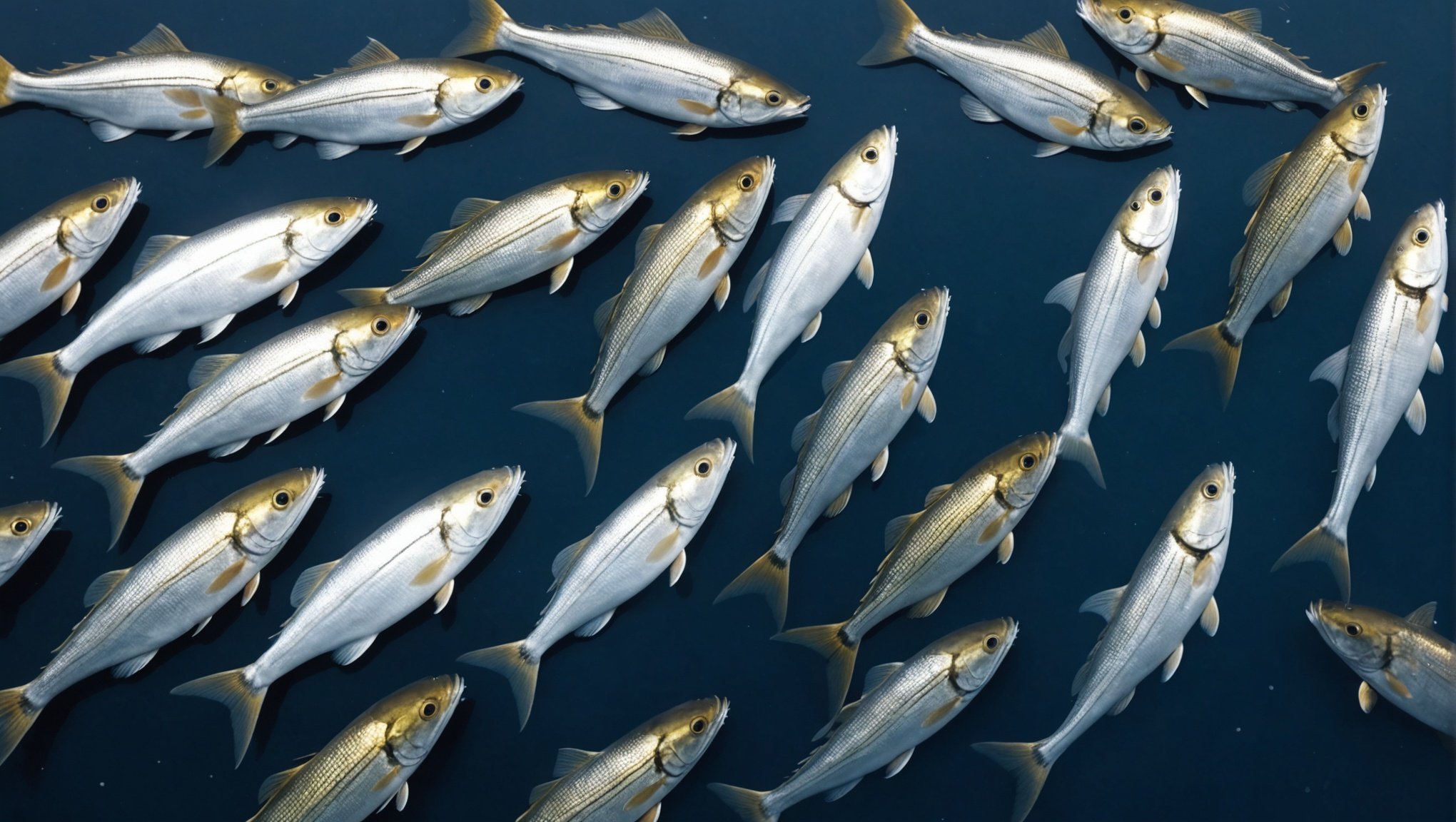Understanding migratory fish populations is vital for maintaining marine ecosystems in the UK. Emerging techniques, such as environmental DNA (eDNA) analysis and acoustic telemetry, are revolutionizing how scientists monitor these species. This exploration highlights innovative methods that enhance data accuracy and provide new insights into fish migration patterns. By bridging technology and ecology, these advancements promise improved conservation strategies, ensuring the health of marine life for future generations. Discover the transformative potential of these cutting-edge techniques and their implications for both scientific research and ocean management.
Advanced Telemetry Techniques for Fish Monitoring
Exploring innovative methods for tracking fish migration patterns
Dans le meme genre : How to Contribute to the Revival of British Butterfly Populations
Overview of Telemetry Technology
Telemetry is a pivotal tool in fish monitoring, offering insights into the migratory behaviors of aquatic species. By employing remote data collection, researchers can track fish movements over vast distances. This technology is crucial for understanding migration patterns, which are vital for conservation efforts.
Telemetry Methods in the UK
In the UK, several telemetry methods are utilized for tracking migratory fish. These include acoustic telemetry, radio telemetry, and satellite telemetry. Each method provides unique advantages, such as acoustic telemetry's ability to track fish in complex riverine environments or satellite telemetry's capacity for long-range tracking.
Avez-vous vu cela : Exploring UK Zoo Breeding Initiatives for the Critically Endangered Corncrake: Conservation Efforts Uncovered
Case Studies of Telemetry Effectiveness
Case studies have demonstrated the effectiveness of telemetry in unraveling fish migration patterns. For instance:
- Atlantic Salmon: Acoustic telemetry has revealed intricate migration routes, aiding in habitat protection.
- European Eel: Radio telemetry studies have enhanced understanding of their elusive migratory behavior.
These examples underscore the technology's role in shaping conservation strategies.
Benefits of Telemetry in Fish Monitoring
- Real-time data collection
- Non-invasive tracking
- Enhanced understanding of migration patterns
By leveraging telemetry, researchers can make informed decisions, ensuring the sustainability of fish populations and their habitats. This technology continues to evolve, offering promising prospects for future fish monitoring endeavors.
Genetic Sampling Methods in Fisheries Research
Understanding fish population genetics is crucial for conservation and biodiversity efforts. Genetic sampling provides valuable insights into the genetic diversity and health of fish populations, particularly migratory species.
Techniques for Genetic Sampling
Genetic sampling involves various techniques to collect and analyze DNA from fish. Methods such as tissue sampling, fin clipping, and environmental DNA (eDNA) collection are commonly employed. These techniques help researchers assess genetic diversity and identify distinct populations. For instance, fin clipping allows for non-invasive sampling, while eDNA can detect species presence in water bodies without direct capture.
Applications of Genetic Data in Conservation
Genetic data is instrumental in conservation biology. It aids in understanding population structure, migration patterns, and genetic health. By analyzing fish population genetics, conservationists can develop strategies to protect endangered species and maintain biodiversity. This data supports habitat restoration and management plans, ensuring sustainable fish populations.
Challenges and Limitations of Genetic Sampling
Despite its benefits, genetic sampling faces challenges. Biodiversity assessments can be limited by sample size and environmental factors affecting eDNA accuracy. Collecting representative samples from migratory fish is complex due to their vast ranges. Additionally, genetic sampling requires specialized equipment and expertise, which may not be accessible in all regions. Addressing these challenges is essential for effective fisheries research.
Remote Sensing Technologies for Aquatic Ecosystems
Exploring innovative approaches in aquatic monitoring and environmental data collection
Overview of Remote Sensing
Remote sensing technologies have revolutionized the monitoring of aquatic environments, providing comprehensive environmental data. These technologies utilize satellite and aerial imagery to assess aquatic ecosystems on a large scale. By capturing data from afar, remote sensing enables researchers to evaluate water quality, vegetation health, and habitat changes without physically disturbing the ecosystem.
Benefits of Remote Sensing
The application of remote sensing in aquatic monitoring offers numerous benefits. It facilitates large-scale ecological assessments that are both time-efficient and cost-effective. Researchers can analyze vast areas, enabling them to detect changes in aquatic environments over time. This method also supports the identification of potential threats to fisheries, contributing to the sustainability of aquatic resources.
Successful Applications in the UK
In the UK, remote sensing has been successfully applied in fisheries management. For instance, it has been used to monitor coastal erosion and assess the impacts of climate change on fish habitats. A notable example is the application of satellite data in tracking algal blooms, which are critical for maintaining water quality and fish health.
- Advantages:
- Non-invasive
- Cost-effective
- Large-scale data collection
Remote sensing continues to be a pivotal tool in understanding and managing aquatic ecosystems.
Impact of Monitoring Techniques on Conservation Efforts
Exploring the integration of technology in ecological management
Influence on Conservation Strategies
Advanced monitoring techniques have significantly shaped conservation strategies by providing detailed data on fish populations. These technologies allow for precise tracking of migration patterns, enabling targeted interventions. For example, telemetry data has been pivotal in identifying critical habitats, leading to the establishment of protected areas.
Case Studies of Successful Conservation Measures
Several case studies highlight the success of integrating monitoring data into fish population management.
- Bristol Channel: Acoustic telemetry data led to the implementation of fishing quotas, resulting in a 20% increase in fish stocks.
- River Dee: Genetic sampling informed restocking efforts, enhancing biodiversity.
These examples underscore the role of data-driven approaches in achieving sustainable fisheries management.
Role of Technology in Sustainable Fisheries
Technology plays a crucial role in the ecological impact of fisheries management. By employing remote sensing and telemetry, researchers can monitor environmental changes and fish health without disturbing ecosystems. This non-invasive approach supports the long-term sustainability of aquatic resources.
- Benefits:
- Enhanced decision-making
- Improved habitat protection
- Sustainable resource management
By leveraging these monitoring techniques, conservationists can develop robust strategies to ensure the health and sustainability of fish populations.
Future Directions in Migratory Fish Monitoring
Exploring the next frontier in fish monitoring technology
Innovations on the Horizon
Emerging technologies are set to transform the landscape of fish monitoring. Innovations such as AI-driven data analysis and machine learning algorithms promise to enhance the precision of tracking migratory fish. These advancements will empower researchers to predict migration patterns more accurately, offering new insights into fish behavior and environmental interactions.
Integrating Different Monitoring Techniques
The future of fish monitoring lies in the integration of diverse monitoring techniques. Combining methods like telemetry, genetic sampling, and remote sensing can offer a more comprehensive view of fish populations. This holistic approach facilitates the collection of robust data, enabling more informed conservation strategies.
- Benefits of Integration:
- Comprehensive data collection
- Improved accuracy in tracking
- Enhanced decision-making capabilities
The Role of Citizen Science
Citizen science is gaining momentum as a powerful tool in fish monitoring. By involving local communities, researchers can expand data collection efforts significantly. Citizen scientists can contribute valuable observations, particularly in remote or under-researched areas. This collaboration not only enriches data quality but also fosters community engagement in conservation efforts.
"The future of conservation will be shaped by the hands of many, not just the few." – Anonymous
Citizen science, when integrated with advanced technologies, can revolutionize fish monitoring and ensure the sustainability of aquatic ecosystems.













